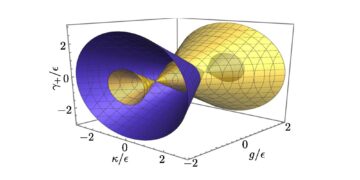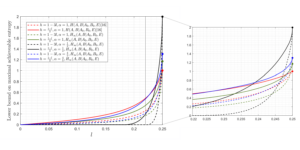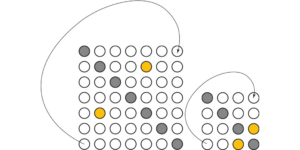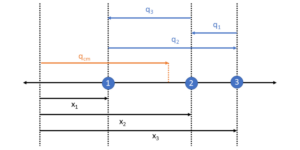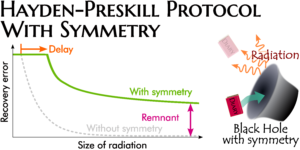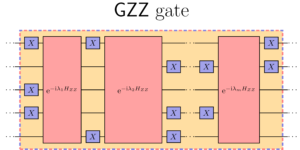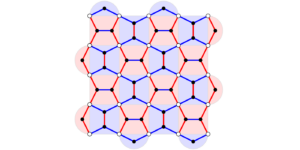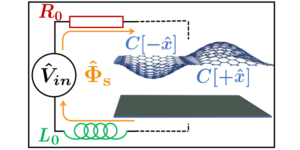1Faculty of Physics, Astronomy and Applied Computer Science, Jagiellonian University, ul. Łojasiewicza 11, 30-348 Kraków, Poland
2Doctoral School of Exact and Natural Sciences, Jagiellonian University, ul. Łojasiewicza 11, 30-348 Kraków, Poland
3QuSoft, CWI and University of Amsterdam, Science Park 123, 1098 XG Amsterdam, the Netherlands
4Center for Theoretical Physics, Polish Academy of Sciences, Al. Lotników 32/46, 02-668 Warszawa, Poland
Find this paper interesting or want to discuss? Scite or leave a comment on SciRate.
Abstract
Spin anticoherent states acquired recently a lot of attention as the most "quantum" states. Some coherent and anticoherent spin states are known as optimal quantum rotosensors. In this work, we introduce a measure of quantumness for orthonormal bases of spin states, determined by the average anticoherence of individual vectors and the Wehrl entropy. In this way, we identify the most coherent and most quantum states, which lead to orthogonal measurements of extreme quantumness. Their symmetries can be revealed using the Majorana stellar representation, which provides an intuitive geometrical representation of a pure state by points on a sphere. Results obtained lead to maximally (minimally) entangled bases in the $2j+1$ dimensional symmetric subspace of the $2^{2j}$ dimensional space of states of multipartite systems composed of $2j$ qubits. Some bases found are iso-coherent as they consist of all states of the same degree of spin-coherence.
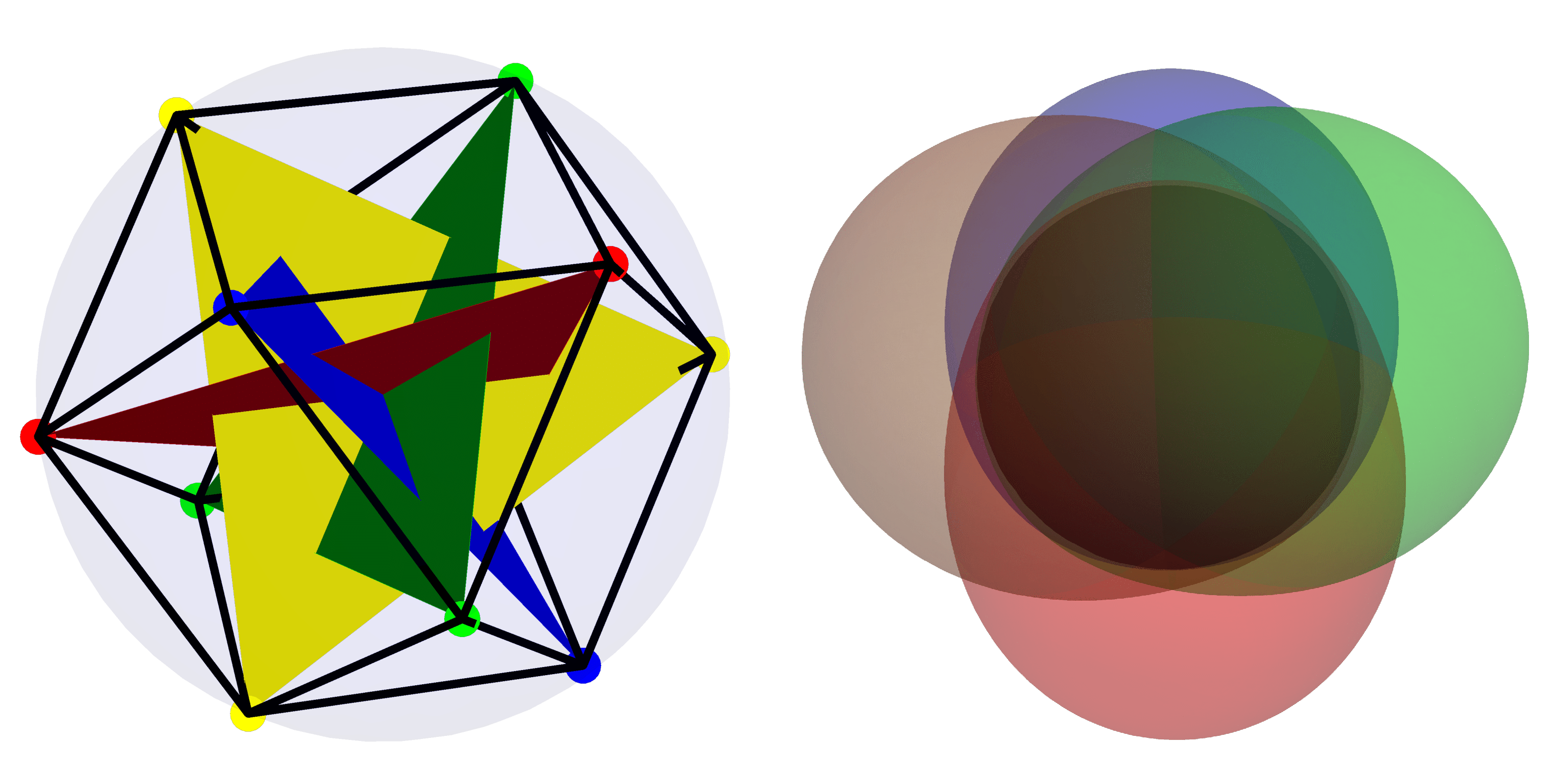
Featured image: In the left image, the most "quantum" basis in $mathcal{H}_4$ is depicted using the stellar representation. On the right, the Husimi function for states in the most coherent ("classical") basis within $mathcal{H}_4$ is presented.
Popular summary
► BibTeX data
► References
[1] T. Frankel, The Geometry of Physics: An Introduction, 3rd ed., Cambridge University Press (2011).
https://doi.org/10.1017/CBO9781139061377
[2] D. Chruściński, and A. Jamiołkowski, Geometric Phases in Classical and Quantum Mechanics, Birkhäuser (2004).
https://doi.org/10.1007/978-0-8176-8176-0
[3] D.A. Lee, Geometric relativity, American Mathematical Society, Providence (2021).
https://doi.org/10.1090/gsm/201
[4] I. Bengtsson, and K. Życzkowski, Geometry of Quantum States: An Introduction to Quantum Entanglement, 2nd ed., Cambridge University Press (2017).
https://doi.org/10.1017/9781139207010
[5] M. Lewin, Geometric methods for nonlinear many-body quantum systems, J. Functional Analysis 260, 12, (2011).
https://doi.org/10.1016/j.jfa.2010.11.017
[6] E. Cohen, H. Larocque, F. Bouchard et al., Geometric phase from Aharonov–Bohm to Pancharatnam–Berry and beyond, Nat. Rev. Phys. 1, 437–449 (2019).
https://doi.org/10.1038/s42254-019-0071-1
[7] E. Majorana Atomi orientati in campo magnetico variable, Nuovo Cimento 9, 43-50 (1932).
https://doi.org/10.1007/BF02960953
[8] R. Barnett, A. Turner, and E. Demler, Classifying novel phases of spinor atoms, Phys. Rev. Lett. 97, 180412 (2006).
https://doi.org/10.1103/PhysRevLett.97.180412
[9] R. Barnett, A. Turner, and E. Demler, Classifying vortices in $S=3$ Bose-Einstein condensates, Phys. Rev. A 76, 013605 (2007).
https://doi.org/10.1103/PhysRevA.76.013605
[10] H. Mäkelä, and K.-A. Suominen, Inert states of spin-s systems, Phys. Rev. Lett. 99, 190408 (2007).
https://doi.org/10.1103/PhysRevLett.99.190408
[11] E. Serrano-Ensástiga, and F. Mireles, Phase characterization of spinor Bose-Einstein condensates: a Majorana stellar representation approach, Phys. Lett. A 492, 129188 (2023).
https://doi.org/10.1016/j.physleta.2023.129188
[12] P. Mathonet at al., Entanglement equivalence of $N$-qubit symmetric states, Phys. Rev. A 81, 052315 (2010).
https://doi.org/10.1103/PhysRevA.81.052315
[13] J. Martin, O. Giraud, P.A. Braun, D. Braun, and T. Bastin, Multiqubit symmetric states with high geometric entanglement, Phys. Rev. A 81, 062347 (2010).
https://doi.org/10.1103/PhysRevA.81.062347
[14] M. Aulbach, D.J.H Markham, and M. Murao, The maximally entangled symmetric state in terms of the geometric measure, New J. Phys. 12, 073025 (2010).
https://doi.org/10.1088/1367-2630/12/7/073025
[15] D.J.H. Markham, Entanglement and symmetry in permutation-symmetric states, Phys. Rev. A 83, 042332 (2011).
https://doi.org/10.1103/PhysRevA.83.042332
[16] P. Ribeiro, and R. Mosseri, Entanglement in the symmetric sector of $n$ qubits, Phys. Rev. Lett. 106, 180502 (2011).
https://doi.org/10.1103/PhysRevLett.106.180502
[17] M.Aulbach, Classification of entanglement in symmetric states, Int. J. Quantum Inform. 10, 1230004 (2012).
https://doi.org/10.1142/S0219749912300045
[18] W. Ganczarek, M. Kuś, and K. Życzkowski, Barycentric measure of quantum entanglement, Phys. Rev. A 85, 032314 (2012).
https://doi.org/10.1103/PhysRevA.85.032314
[19] A. Mandilara, T. Coudreau, A. Keller, and P. Milman, Entanglement classification of pure symmetric states via spin coherent states, Phys. Rev. A 90, 050302(R) (2014).
https://doi.org/10.1103/PhysRevA.90.050302
[20] P. Hyllus, at al., Fisher information and multiparticle entanglement, Phys. Rev. A 85, 022321 (2012).
https://doi.org/10.1103/PhysRevA.85.022321
[21] J.H. Hannay, The Berry phase for spin in the Majorana representation, J. Phys. A: Math. Gen. 31, L53 (1998).
https://doi.org/10.1088/0305-4470/31/2/002
[22] P. Bruno, Quantum Geometric Phase in Majorana’s Stellar Representation: Mapping onto a many-body Aharonov-Bohm Phase, Phys. Rev. Lett. 108, 240402 (2012).
https://doi.org/10.1103/PhysRevLett.108.240402
[23] H.D. Liu, and L.B. Fu, Berry phase and quantum entanglement in Majorana's stellar representation, Phys. Rev. A 94, 022123 (2016).
https://doi.org/10.1103/PhysRevA.94.022123
[24] P. Ribeiro, J. Vidal, and R. Mosseri, Thermodynamical limit of the Lipkin-Meshkov-Glick model, Phys. Rev. Lett. 99, 050402 (2007).
https://doi.org/10.1103/PhysRevLett.99.050402
[25] P. Ribeiro, J. Vidal, and R. Mosseri, Exact spectrum of the Lipkin-Meshkov-Glick model in the thermodynamic limit and finite-size corrections, Phys. Rev. E 78, 021106 (2008).
https://doi.org/10.1103/PhysRevE.78.021106
[26] J. Zimba, "Anticoherent" spin states via the Majorana Representation, Electron. J. Theor. Phys. 3, 143 (2006).
https://api.semanticscholar.org/CorpusID:13938120
[27] D. Baguette, T. Bastin, and J. Martin, Multiqubit symmetric states with maximally mixed one-qubit reductions, Phys. Rev. A 90, 032314 (2014).
https://doi.org/10.1103/PhysRevA.90.032314
[28] O. Giraud, D. Braun, D. Baguette, T. Bastin, and J. Martin, Tensor representation of spin states, Phys. Rev. Lett. 114, 080401 (2015).
https://doi.org/10.1103/PhysRevLett.114.080401
[29] D. Baguette, F. Damanet, O. Giraud, and J. Martin, Anticoherence of spin states with point-group symmetries, Phys. Rev. A 92, 052333 (2015).
https://doi.org/10.1103/PhysRevA.92.052333
[30] H.D. Liu, L.B. Fu, X. Wang, Coherent-state approach for Majorana representation, Commun. Theor. Phys. 67, 611 (2017).
https://doi.org/10.1088/0253-6102/67/6/611
[31] D. Baguette, and J. Martin, Anticoherence measures for pure spin states, Phys. Rev. A 96, 032304 (2017).
https://doi.org/10.1103/PhysRevA.96.032304
[32] P. Kolenderski, and R. Demkowicz-Dobrzański, Optimal state for keeping reference frames aligned and the Platonic solids, Phys. Rev. A 78, 052333 (2008).
https://doi.org/10.1103/PhysRevA.78.052333
[33] C. Chryssomalakos, and H. Hernández-Coronado, Optimal quantum rotosensors, Phys. Rev. A 95, 052125 (2017).
https://doi.org/10.1103/PhysRevA.95.052125
[34] A.Z. Goldberg, and D.F.V. James, Quantum-limited Euler angle measurements using anticoherent states, Phys. Rev. A 98, 032113 (2018).
https://doi.org/10.1103/PhysRevA.98.032113
[35] J. Martin, S. Weigert, and O. Giraud, Optimal detection of rotations about unknown axes by coherent and anticoherent states, Quantum 4, 285 (2020).
https://doi.org/10.22331/q-2020-06-22-285
[36] J. Crann, D.W. Kribs, and R. Pereira, Spherical designs and anticoherent spin states, J. Phys. A: Math. Theor. 43, 255307 (2010).
https://doi.org/10.1088/1751-8113/43/25/255307
[37] E. Bannai and M. Tagami, A note on anticoherent spin states, J. Phys. A: Math. Theor. 44, 342002 (2011).
https://doi.org/10.1088/1751-8113/44/34/342002
[38] M. Wang, and Y. Zhu, Anticoherent spin-2 states and spherical designs, J. Phys. A: Math. Theor. 55, 425304 (2022).
https://doi.org/10.1088/1751-8121/ac971d
[39] A.Z. Goldberg, A.B. Klimov, M.Grassl, G. Leuchs, and L.L. Sánchez-Soto, Extremal quantum states, AVS Quantum Sci. 2, 044701 (2020).
https://doi.org/10.1116/5.0025819
[40] A.Z. Goldberg, M. Grassl, G. Leuchs, and L.L. Sánchez-Soto, Quantumness beyond entanglement: The case of symmetric states, Phys. Rev. A 105, 022433 (2022).
https://doi.org/10.1103/PhysRevA.105.022433
[41] O. Giraud, P. Braun, and D. Braun, Quantifying quantumness and the quest for Queens of Quantum, New J. Phys. 12, 063005 (2010).
https://doi.org/10.1088/1367-2630/12/6/063005
[42] R. Delbourgo, Minimal uncertainty states for the rotation group and allied groups, J. Phys. A 10, L233 (1977).
https://doi.org/10.1088/0305-4470/10/11/012
[43] A. Wehrl, On the relation between classical and quantum-mechanical entropy, Rep. Math. Phys. 16, 353 (1979).
https://doi.org/10.1016/0034-4877(79)90070-3
[44] E.H. Lieb, Proof of an entropy conjecture of Wehrl, Commun. Math. Phys. 62, 35 (1978).
https://doi.org/10.1007/BF01940328
[45] C.T. Lee, Wehrl's entropy of spin states and Lieb's conjecture, J. Phys. A 21, 3749 (1988).
https://doi.org/10.1088/0305-4470/21/19/013
[46] E.H. Lieb, and J.P. Solovej, Proof of an entropy conjecture for Bloch coherent spin states and its generalizations, Acta Math. 212, 379 (2014).
https://doi.org/10.1007/s11511-014-0113-6
[47] F. Bouchard, at al., Quantum metrology at the limit with extremal Majorana constellations, Optica 4, 1429-1432 (2017).
https://doi.org/10.1364/OPTICA.4.001429
[48] A. Wehrl, General properties of entropy, Rev. Mod. Phys. 50, 221 (1978).
https://doi.org/10.1103/RevModPhys.50.221
[49] A. Wehrl, The many facets of entropy, Rep. Math. Phys. 30, 119 (1991).
https://doi.org/10.1016/0034-4877(91)90045-O
[50] S. Gnutzmann and K. Życzkowski, Renyi-Wehrl entropies as measures of localization in phase space, J. Phys. A 34, 10123 (2001).
https://doi.org/10.1088/0305-4470/34/47/317
[51] K. Życzkowski, Localization of eigenstates and mean Wehrl entropy, Physica E 9, 583 (2001).
https://doi.org/10.1016/S1386-9477(00)00266-6
[52] L.L. Sánchez-Soto, A.B. Klimov, P. de la Hoz, and G. Leuchs, Quantum versus classical polarization states: when multipoles count, J. Phys. B 46 104011 (2013).
https://doi.org/10.1088/0953-4075/46/10/104011
[53] A. Tavakoli, and N. Gisin, The Platonic solids and fundamental tests of quantum mechanics, Quantum 4, 293 (2020).
https://doi.org/10.22331/q-2020-07-09-293
[54] H.Ch. Nguyen, S. Designolle, M. Barakat, and O. Gühne, Symmetries between measurements in quantum mechanics, preprint arXiv:2003.12553 (2022).
https://doi.org/10.48550/arXiv.2003.12553
arXiv:2003.12553
[55] J.I. Latorre, and G. Sierra, Platonic entanglement, Quantum Inf. Comput. 21, 1081 (2021).
https://doi.org/10.26421/QIC21.13-14-1
[56] K. Bolonek-Lasoń, and P. Kosiński, Groups, Platonic solids and Bell inequalities, Quantum 5, 593 (2021).
https://doi.org/10.22331/q-2021-11-29-593
[57] K.F. Pál, and T. Vértesi, Groups, Platonic Bell inequalities for all dimensions, Quantum 6, 756 (2022).
https://doi.org/10.22331/q-2022-07-07-756
[58] R. H. Dicke, Coherence in spontaneous radiation processes, Phys. Rev. 93, 99 (1954).
https://doi.org/10.1103/PhysRev.93.99
[59] V. Karimipour, and L. Memarzadeh, Equientangled bases in arbitrary dimensions Phys. Rev. A 73, 012329 (2006).
https://doi.org/10.1103/PhysRevA.73.012329
[60] G. Rajchel, A. Gąsiorowski, and K. Życzkowski, Robust Hadamard matrices, unistochastic rays in Birkhoff polytope and equi-entangled bases in composite spaces Math. Comp. Sci. 12, 473 (2018).
https://doi.org/10.1007/s11786-018-0384-y
[61] J. Czartowski, D. Goyeneche, M. Grassl, and K. Życzkowski, Isoentangled mutually unbiased bases, symmetric quantum measurements, and mixed-state designs, Phys. Rev. Lett. 124, 090503 (2020).
https://doi.org/10.1103/PhysRevLett.124.090503
[62] F. Del Santo, J. Czartowski, K. Życzkowski, and N. Gisin, Iso-entangled bases and joint measurements, preprint arXiv:2307.06998 (2023).
https://doi.org/10.48550/arXiv.2307.06998
arXiv:2307.06998
[63] R. Penrose, On Bell non-locality without probabilities: some curious geometry, Quantum Reflections (2000).
[64] J. Zimba and R. Penrose, On Bell non-locality without probabilities: More curious geometry, Stud. Hist. Phil. Sci. 24, 697 (1993).
https://doi.org/10.1016/0039-3681(93)90061-N
[65] J.E. Massad, and P.K. Aravind, The Penrose dodecahedron revisited, Am. J. Physics 67, 631 (1999).
https://doi.org/10.1119/1.19336
[66] K. Husimi, Some Formal Properties of the Density Matrix, Proc. Phys. Math. Soc. 22, 264 (1940).
https://doi.org/10.11429/ppmsj1919.22.4_264
[67] W. Słomczyński, and K. Życzkowski, Mean dynamical entropy of quantum maps on the sphere diverges in the semiclassical limit, Phys. Rev. Lett. 80, 1880 (1998).
https://doi.org/10.1103/PhysRevLett.80.1880
[68] M. Piotrak, M. Kopciuch, A.D. Fard, M. Smolis, S. Pustelny, K. Korzekwa, Perfect quantum protractors, preprint arXiv:2310.13045 (2023).
https://doi.org/10.48550/arXiv.2310.13045
arXiv:2310.13045
[69] NCN Maestro 7 2015/18/A/ST2/00274 website https://chaos.if.uj.edu.pl/ karol/Maestro7/files/data3/Numerical_Results.dat.
https://chaos.if.uj.edu.pl/~karol/Maestro7/files/data3/Numerical_Results.dat
[70] D. Weingarten, Asymptotic behavior of group integrals in the limit of infinite rank, J. Math. Phys. 19, 999 (1978).
https://doi.org/10.1063/1.523807
[71] B. Collins, and P. Śniady, Integration with Respect to the Haar Measure on Unitary, Orthogonal and Symplectic Group, Commun. Math. Phys. 264, 773 (2006).
https://doi.org/10.1007/s00220-006-1554-3
[72] G. Rajchel, Quantum mappings and designs, PhD Thesis, preprint arXiv:2204.13008 (2022).
https://doi.org/10.48550/arXiv.2204.13008
arXiv:2204.13008
[73] D. Martin, and E.P. Wigner, Group theory and its application to the quantum mechanics of atomic spectra, Academic Press Inc. N.Y. (1959).
https://doi.org/10.1016/b978-0-12-750550-3.x5001-0
Cited by
[1] Michał Piotrak, Marek Kopciuch, Arash Dezhang Fard, Magdalena Smolis, Szymon Pustelny, and Kamil Korzekwa, "Perfect quantum protractors", arXiv:2310.13045, (2023).
[2] Aaron Z. Goldberg, "Correlations for subsets of particles in symmetric states: what photons are doing within a beam of light when the rest are ignored", arXiv:2401.05484, (2024).
The above citations are from SAO/NASA ADS (last updated successfully 2024-01-25 11:53:23). The list may be incomplete as not all publishers provide suitable and complete citation data.
Could not fetch Crossref cited-by data during last attempt 2024-01-25 11:53:22: Could not fetch cited-by data for 10.22331/q-2024-01-25-1234 from Crossref. This is normal if the DOI was registered recently.
This Paper is published in Quantum under the Creative Commons Attribution 4.0 International (CC BY 4.0) license. Copyright remains with the original copyright holders such as the authors or their institutions.
- SEO Powered Content & PR Distribution. Get Amplified Today.
- PlatoData.Network Vertical Generative Ai. Empower Yourself. Access Here.
- PlatoAiStream. Web3 Intelligence. Knowledge Amplified. Access Here.
- PlatoESG. Carbon, CleanTech, Energy, Environment, Solar, Waste Management. Access Here.
- PlatoHealth. Biotech and Clinical Trials Intelligence. Access Here.
- Source: https://quantum-journal.org/papers/q-2024-01-25-1234/
- :is
- :not
- ][p
- 06
- 1
- 10
- 11
- 114
- 12
- 13
- 14
- 15%
- 16
- 17
- 19
- 1998
- 1999
- 20
- 2000
- 2001
- 2006
- 2008
- 2010
- 2011
- 2012
- 2013
- 2014
- 2015
- 2016
- 2017
- 2018
- 2019
- 2020
- 2021
- 2022
- 2023
- 2024
- 212
- 22
- 2204
- 23
- 24
- 25
- 26
- 264
- 27
- 28
- 29
- 2nd
- 30
- 31
- 32
- 33
- 35%
- 36
- 39
- 3rd
- 40
- 41
- 43
- 46
- 49
- 50
- 51
- 52
- 53
- 54
- 58
- 60
- 65
- 66
- 67
- 7
- 70
- 72
- 73
- 8
- 80
- 9
- 90
- 91
- 97
- 98
- a
- Aaron
- About
- above
- ABSTRACT
- academic
- Academy
- access
- acquired
- Adam
- affiliations
- AL
- aligned
- All
- also
- am
- American
- amsterdam
- an
- analysis
- analyzed
- and
- Application
- applications
- applied
- approach
- ARE
- AS
- astronomy
- At
- atomic
- attempt
- attention
- author
- authors
- average
- AXES
- b
- basis
- BE
- Beam
- behavior
- Bell
- between
- Beyond
- Break
- Bruno
- by
- cambridge
- CAN
- candidates
- case
- characterize
- classification
- cohen
- COHERENT
- Collins
- comment
- Commons
- COMP
- complete
- composed
- computer
- computer science
- concerning
- conjecture
- considered
- Consisting
- copyright
- Corrections
- correlations
- could
- count
- curious
- CWI
- data
- de
- Degree
- del
- Den
- density
- designs
- Detection
- determined
- dimensions
- discuss
- Display
- Distinguished
- doing
- during
- e
- E&T
- ed
- equivalence
- Ether (ETH)
- exception
- extension
- extreme
- facets
- For
- formal
- found
- from
- fu
- function
- functional
- fundamental
- Gen
- General
- geometry
- given
- Group
- Group’s
- harvard
- Have
- High
- holders
- HTTPS
- i
- identify
- if
- image
- in
- Inc.
- indicated
- individual
- inequalities
- inform
- information
- institutions
- integration
- interesting
- International
- introduce
- Introduction
- intuitive
- Iran
- ITS
- james
- Jan
- JavaScript
- joint
- journal
- keeping
- known
- Last
- lead
- Leads
- Leave
- Lee
- left
- License
- light
- LIMIT
- List
- Localization
- Lot
- Maestro
- many
- mapping
- Maps
- Martin
- math
- mathematical
- Matrix
- max-width
- May..
- mean
- measure
- measurement
- measurements
- measures
- mechanics
- methods
- Metrology
- minimal
- mixed
- model
- Month
- more
- most
- mutually
- Natural
- New
- Nguyen
- normal
- note
- novel
- obtained
- of
- on
- open
- optimal
- optimization
- or
- original
- Other
- pages
- Paper
- Park
- perfect
- performed
- phase
- phases
- phd
- PHIL
- Photons
- Physics
- plato
- Plato Data Intelligence
- PlatoData
- points
- Polish
- Practical
- Practical Applications
- presented
- press
- previous
- PROC
- processes
- proof
- properties
- proposing
- provide
- provides
- published
- publisher
- publishers
- Quantum
- quantum entanglement
- Quantum Mechanics
- quantum systems
- qubits
- queens
- quest
- R
- Radiation
- rank
- recently
- reductions
- reference
- references
- Reflections
- registered
- relation
- relativity
- remains
- representation
- respect
- REST
- Results
- reveal
- Revealed
- Ribeiro
- right
- robust
- s
- same
- School
- SCI
- Science
- SCIENCES
- Search
- sector
- set
- single
- Society
- Solutions
- some
- Space
- spaces
- Spectrum
- sphere
- Spin
- State
- States
- Stellar
- structures
- studies
- Successfully
- such
- suggest
- suitable
- Systems
- T
- terms
- tests
- that
- The
- their
- theoretical
- theory
- thesis
- they
- this
- Title
- to
- too
- tool
- unbiased
- Uncertainty
- under
- unique
- university
- unknown
- updated
- URL
- using
- Values
- variable
- Versus
- via
- volume
- von
- W
- wang
- want
- was
- Way..
- we
- Website
- Website https
- What
- when
- which
- with
- within
- without
- Work
- X
- year
- zephyrnet

